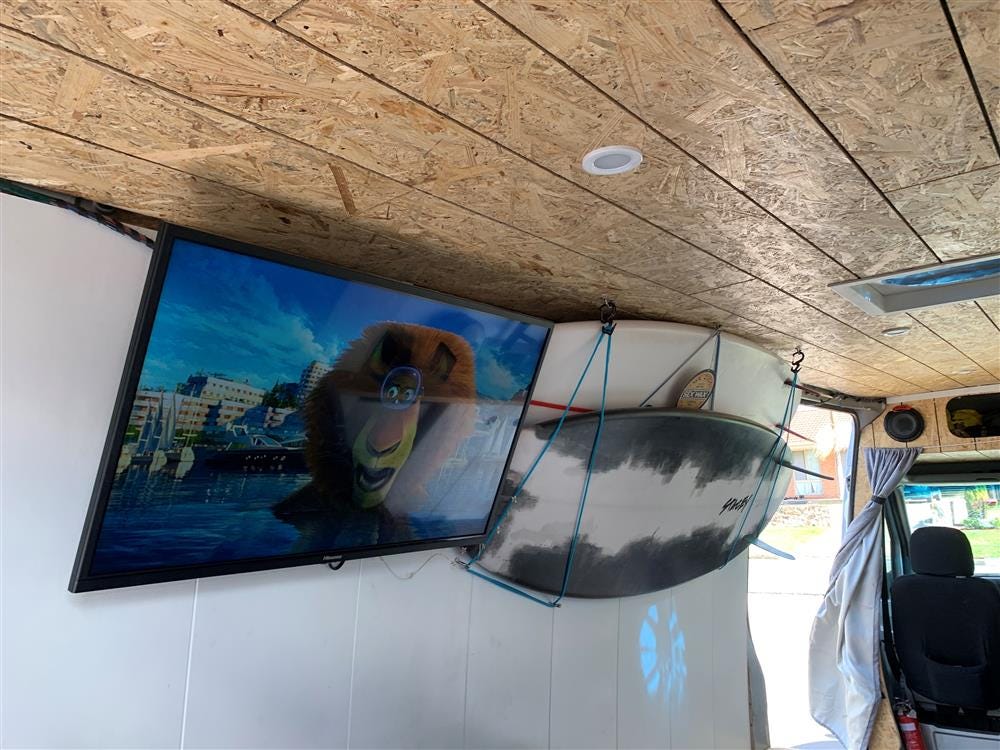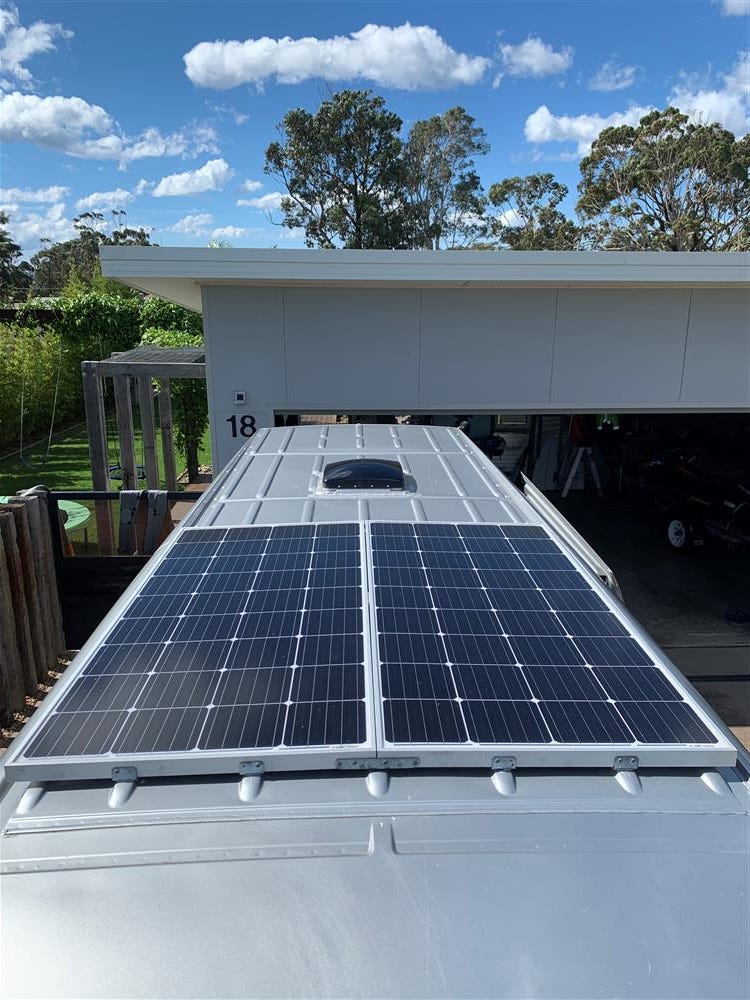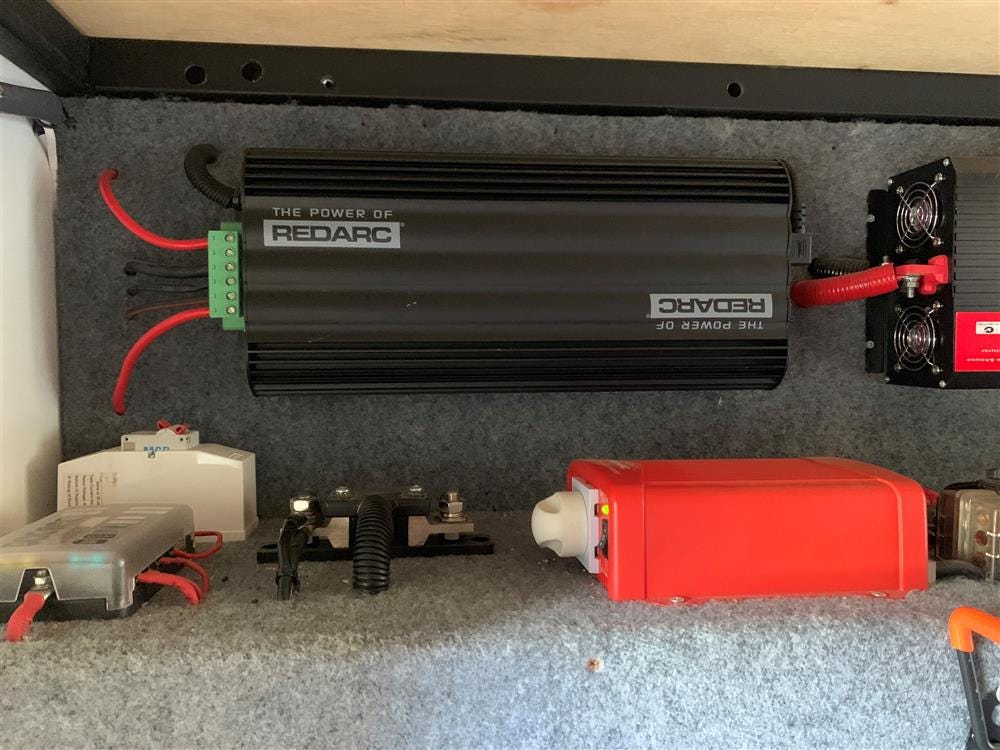Power is critical to vanlife, there’s no question about it. Without a power system you wouldn’t be able to run fridges, heaters, water pumps, fans – any of the necessities that make vanlife comfortable. But trying to set up a power system can be daunting, and without the proper knowledge or equipment, potentially dangerous. That often brings people to their first question…
What to consider when choosing a vanlife power system?
When photographer Mark ‘Sticks’ Croker first started searching for a setup for his new van build he needed a setup that would support all his power needs and not leave him stranded without power. Sticks had a list of essentials he wanted in the van including a 65L fridge, 240V 32inch TV, hot water pump for the sink and shower, downlights, external lights. 240V power points, 12V USB ports, wall mounted fan and diesel heater. With this list of necessities, he had to then figure out his power requirements and what size system he would need. To do this there are a few simple equations you can do.
Firstly, figure out the amount of electricity you plan on using in Watt-hours (Wh). With this list of gadgets find out the amount of Watts each of them draws. This can be found relatively easily either in the device’s manual or with a quick Google. Next estimate the number of hours you will be using each item per day and multiply this number by the Watts.
Watts x hours = Watt-hours (Wh)
Once you’ve determined the Wh for each item, add them all together. This your total Wh.
Next, determine the battery capacity you will need. Battery capacity is measured in amp-hours (ah). To find the ah you would need, divide the Wh by your system voltage (12V).
Wh / 12V = ah


Sticks' needed enough power to run the TV as well as lights, fridges and accessory sockets
Choosing a battery
This calculation will tell you how many ah of battery you need to be looking for, though choosing a battery isn’t quite as simple as finding a battery with that exact amount of ah. There are two main types of batteries that need to be considered when looking at which one to use regular batteries (including flooded-lead-acid, AGM and gel batteries) and LiFePO4 (lithium iron phosphate batteries).
Regular deep cycle batteries should not be depleted below 50% of their capacity as you risk shortening their lifespan and damaging them. Therefore, when looking at a 100ah battery, for example, the recommended usable capacity is only about half of this or 50ah.
LiFePO4 batteries, however, are rated in usable amp hours, meaning 100Ah battery will provide 100Ah without affecting the battery life and though they are more expensive than a regular battery they are lighter and tend to last longer.
While there is no right or wrong choice when it comes to battery selection these factors need to be considered when determining the ah of battery needed.
What about solar?
Sticks decided, to support his power system, that he wanted to install solar panels above the driver’s cabin of his van. To determine how many Watts of solar would be needed, another simple calculation is used.
Again using the total number of Wh needed across all your devices, divide this by the average amount of full sunlight per day (for example, 5 or 6 hours).
Wh / sunlight = solar panel Watts needed
This gives the total amount of solar panel Watts that should, in theory, fully charge your batteries and accommodate your power consumption each day. Though it does pay to round up and overcompensate as you never know what is going to happen. Overcast days, shade, less sun and rainy days in winter, and days where you might just consume more power all need to be considered.
With all this in mind, Sticks determined he needed two 150W (300W) slim line solar panels.


Sticks put his panels on the cabin roof
Which system to choose?
When deciding on a set up to tie his battery and solar together REDARC was the only system being talked about on the Internet. Coming from respectable 4x4 companies and well-known outdoorsmen the REDARC Manager30 Battery Management System seemed like the only way to go.
The complete battery management system, the Manager30 incorporates AC, DC and solar inputs to achieve the best charge for an auxiliary battery. Able to charge, lead-acid, gel, calcium, AGM or LiFePO4 batteries it ensures that all your batteries are always fully charged and ready to go. Paired with a 350w REDARC inverter, the whole setup is neatly wired up and tucked away under the bed in the back of the van.
After a few months of having the setup installed Sticks couldn’t be happier, “I now understand why there is so much hype over REDARC and the products they’re creating.” The Manager30 system has given him and his family the freedom to travel off-grid and not need any assistance. It has provided him with the power to charge all his camera gear while shooting remote weddings and the assurance that he won’t miss any special moments.


The Manager30 and wiring tucked away neatly under the bed
Travelling with a family, including two sons under the age of four, mean that the van needed to be fitted with all the luxuries of home. This included a fridge to keep beers cold, a TV to entertain the kids after long days on the road and a heater for chilly winter nights. Stick’s Manager30 setup handles all this and more with ease.
“REDARC has given my family the opportunity to hop straight in the van and escape at any point without worrying about the power system failing on us,” says Sticks, “I spend two nights a week in the van when I work and after a long day having the freedom to jump in the back, open the fridge, flick on the TV and chill out in a well-lit space is awesome. I 100% back the REDARC.”
To see more about the Manager30 and how it can be set up to power all your vanlife needs take the REDARC virtual product tour or to see more of Sticks and his photography on Instagram.
